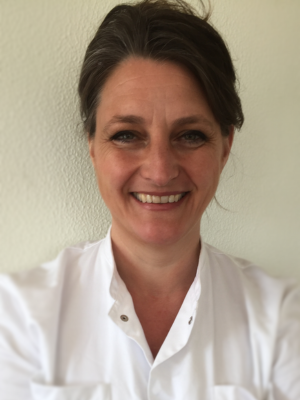National clinical study
NOAC 9 - A Phase II Randomised Nordic Anal Cancer Group Study on Circulating Tumor DNA Guided Follow-Up
The main purpose is to investigate if ctDNA can improve the detection of early treatment failure or recurrence and thereby assist in increasing the potential for cure. Furthermore we aim to provide evidence for use of imaging and establish early interventions
against late morbidities.
The project received funding in 2021
Principal Investigator (PI)

Collaborators
Vejle Hospital
Herlev and Gentofte Hospital
Aarhus University Hospital
Patient enrollment
200
Cancer
Anal cancer
Type
Prospective interventional - randomised
Platform
ddPCR
Abstract
Squamous cell carcinoma of the anus is a rare disease, with less than 200 new cases in Denmark each year, but the incidence is increasing. The primary treatment modality is concomitant chemoradiotherapy (CRT) comprising high dose intensity-modulated radiotherapy (IMRT) based radiation therapy with combination chemotherapy. The overall response to treatment is excellent for the smaller tumors and less pronounced for high-risk tumors. The current overall treatment response and 5-year survival rate is still unknown for Danish patients, since we have no prospective clinical central database, and follow-up strategies are currently based on limited levels of evidence.
A follow-up (FU) program for squamous cell carcinoma of the anus (SCCA) has 3 purposes; 1) to detect lack of complete response to primary treatment, 2) early detection of local or distant recurrence and 3) to describe and manage late morbidity. The Danish Anal Cancer Group (DACG) has recently provided a national guideline for FU after SCCA (https://llk.dk/7oithj) with the above purposes to ensure equality for patients treated in the three Danish centers.
SCCA is in most cases Human Papillomavirus (HPV) associated. The HPV is integrated into the tumor DNA and can be detected in the plasma, as measure of ctDNA. Recent studies have confirmed a clinical potential from measuring plasma HPV (pHPV) in SCC diseases, including SCCA . Presence of pHPV during FU has been demonstrated in oropharynx cancer, with a significant lead time between pHPV positivity and clinically detected recurrence, and a high positive predictive and negative predictive value of the test in post-CRT FU. Smaller studies indicate similar potential in SCCA, as presented recently in a study of 20 SCCA patients. The use of pHPV measurement in follow-up has the potential to become highly relevant for all HPV associated cancers.
There is a strong rationale for studies potentially leading to early detection of recurrences, which could improve overall survival. Early identification of metastatic disease could potentially lead to curative interventions and/or improve survival by early initiation of systemic therapy.
The purpose of the present follow-up study is to investigate if circulating tumor DNA can improve the detection of early treatment failure or recurrence and hereby assist in increasing the potential for cure from chemoradiotherapy for anal cancer.
Study design:
A prospective Phase II randomised Nordic multicenter trial comparing standard follow-up with ctDNA guided imaging after SCCA
ADDRESS FOR THE SECRETARIAT
Science Center Skejby, MOMA
Brendstrupgårdsvej 21, build. A
8200 Aarhus N
CONTACT
ctDNA@clin.au.dk
+45 78 45 53 39

